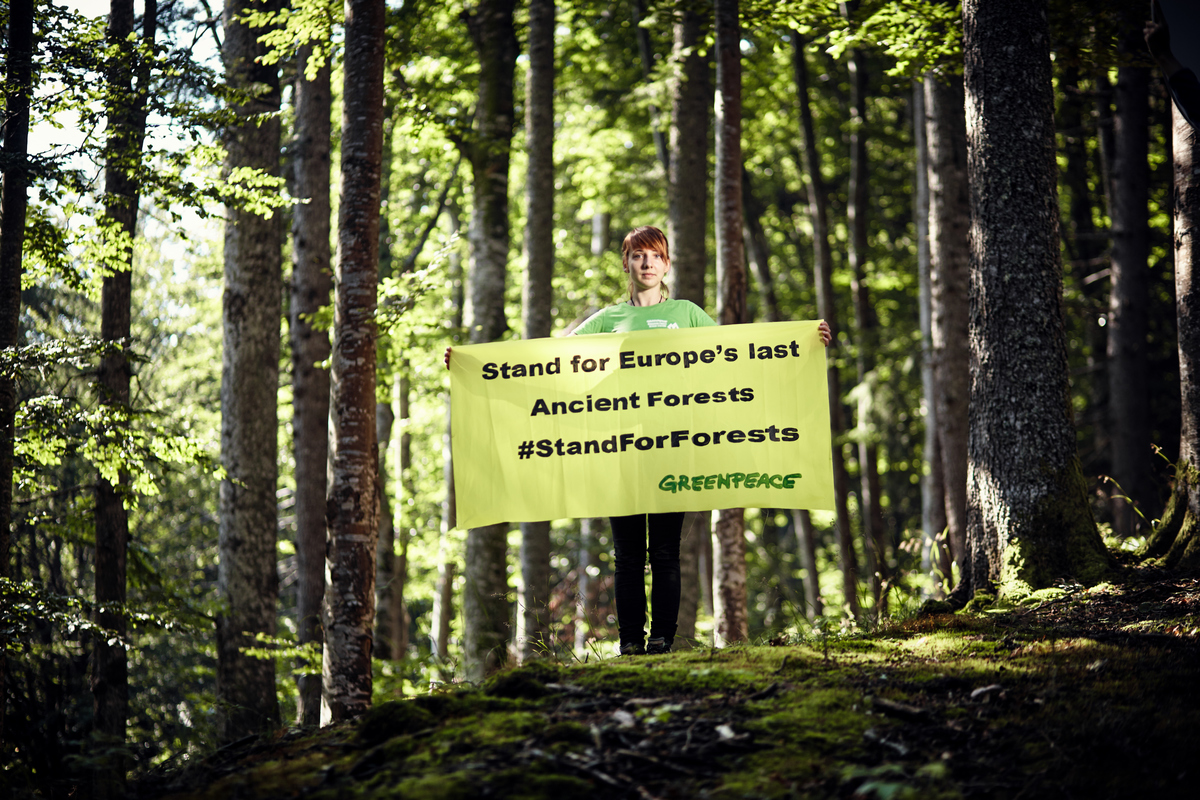Forests cover around 40% of Europe’s land area, creating green and lush landscapes. However, a darker reality emerges about their state when you dig into the statistics. Here are five things you probably didn’t know about the current state of Europe’s forests.
1. The natural diversity of Europe’s forests is under threat

A staggering 75% of Europe’s forests show a worrying pattern – they have trees of the same age. In addition, almost a third of the EU’s forests consist of only one type of tree species, mainly conifers. This uniformity, driven by intensive industrial forest management practices, has terrible consequences for these precious ecosystems.
2. Europe’s forests are losing their endemic and tallest trees

More than half of Europe’s endemic trees – those that don’t exist anywhere else on earth such as the iconic Horse Chestnut, European Ash and Sorbus – are threatened with extinction. At the same time we are losing Europe’s tallest forests. Heavily managed forests with few, usually fast-growing, tree species and even-aged trees are replacing the diverse and ecologically valuable natural forests that once thrived on the continent, heavily impacting local biodiversity.
3. Europe’s forests are becoming more and more vulnerable

Industrial forestry practices have significantly damaged the complexity of European forests, impacting plant and animal diversity. This lack of diversity weakens forest resilience, resulting in over 60% of trees facing threats from fires, pests, and storms. The mortality rate of tree canopies has doubled since the late 20th century.
Forests with diverse tree species, ages, and growth stages are more resilient to the climate crisis and disturbances, and storing more carbon. Additionally, these diverse forests play a vital role in purifying air, filtering water, controlling floods, preventing erosion, and preserving biodiversity.
4. We have already lost 97% of old-growth forests in Europe

Old-growth and other high nature value forests are some of the richest forest environments. These forests play a crucial role in preserving the well-being of our planet’s ecosystems, serving as a protective barrier against the consequences of the climate and nature crises. Unfortunately, primary and old-growth forests within the EU are limited in size, scarce, exist only in fragmented pockets and make up less than 3% of the total forest area in the EU.
5. The biodiversity of Europe’s forests is declining alarmingly

Instead of being a vibrant place for biodiversity, the unsustainable but still widespread industrial forestry has turned our forests into habitats where many species can no longer live. According to Birdlife International, more than a quarter of all bird species associated with forest habitats are in decline. The European mink and the Bavarian pine vole, for example, are both critically endangered – just one step away from extinction. Many more are vulnerable or endangered.
Deforestation, clear-cutting and the removal of habitat trees, deadwood and stumps have a significant negative impact on forest-dependent species such as insects, mammals, non-vascular plants (like moss, hornwort, and liverwort) and breeding birds.
The current state of Europe’s forests calls for urgent and decisive action. Greedy corporations, backed by banks providing billions of euros, are exploiting and destroying nature in Europe and worldwide. It’s time to counter the profiteers who are risking our wellbeing and biodiversity.
European decision-makers must take their responsibility to protect and restore Europe’s forests seriously. As a start, they must immediately end the exploitation of old-growth forests and shift to close-to-nature forestry to avoid repeating the same mistakes in the future.
We urgently need government action to mitigate the effects of the climate crisis, stop the profiteers, and put nature first.

It is time to stop crimes against the ecosystems that protect us. Strong laws and strict controls must be put in place.
Read Our DemandsEmma Pettersson is a Senior Digital Campaigner with the Greenpeace European Food, Forest and Nature team, based in Sweden.



